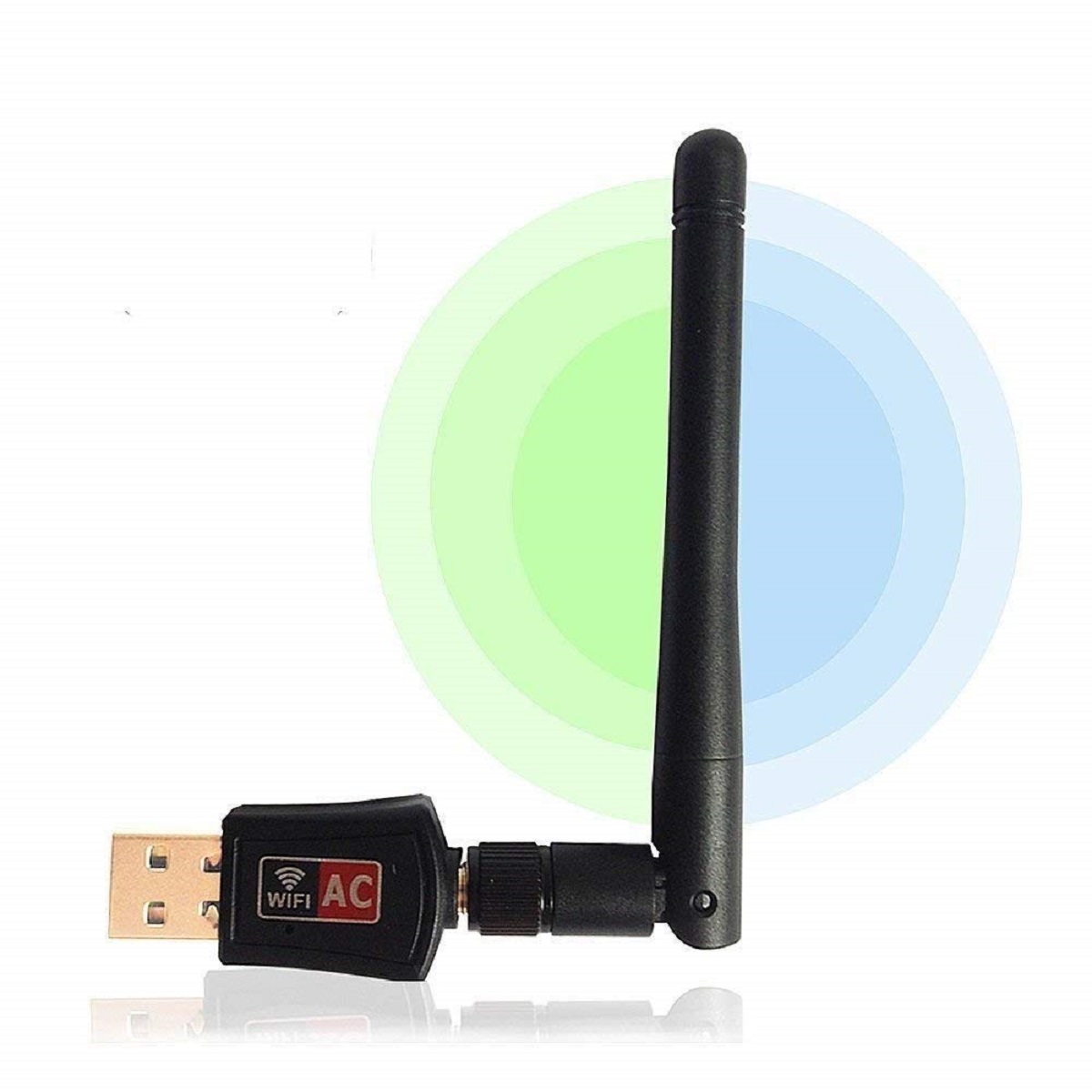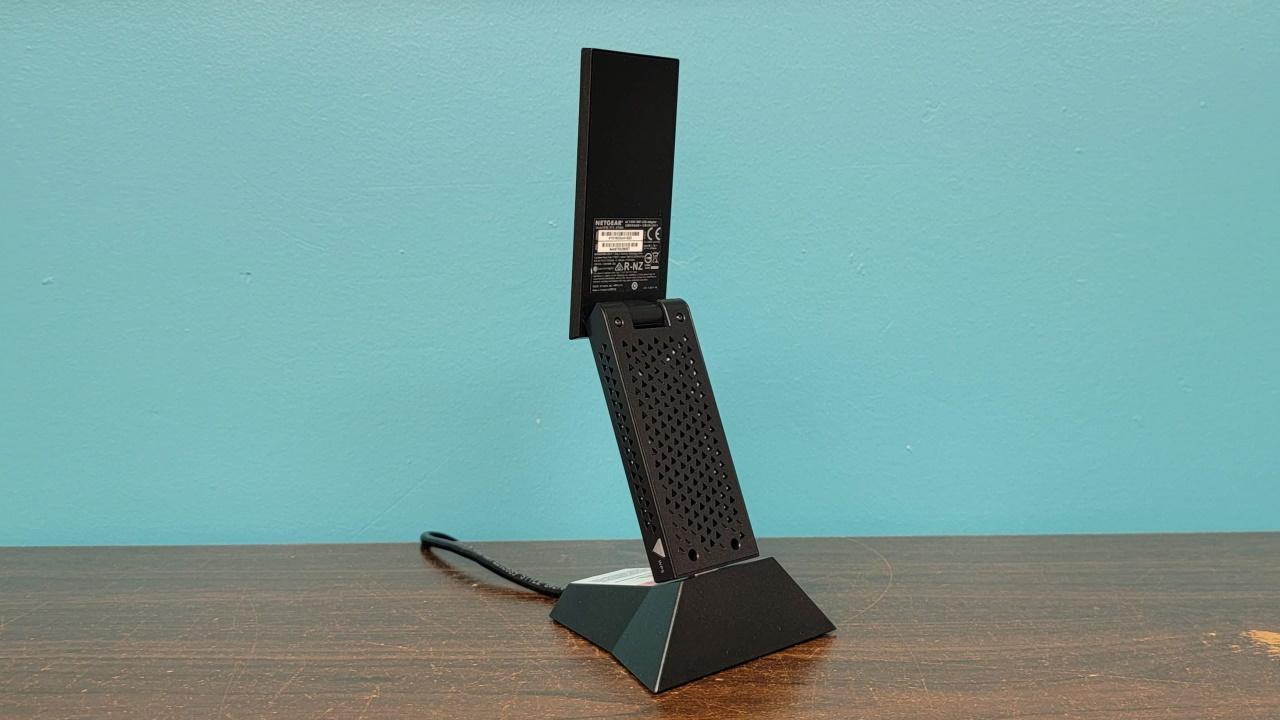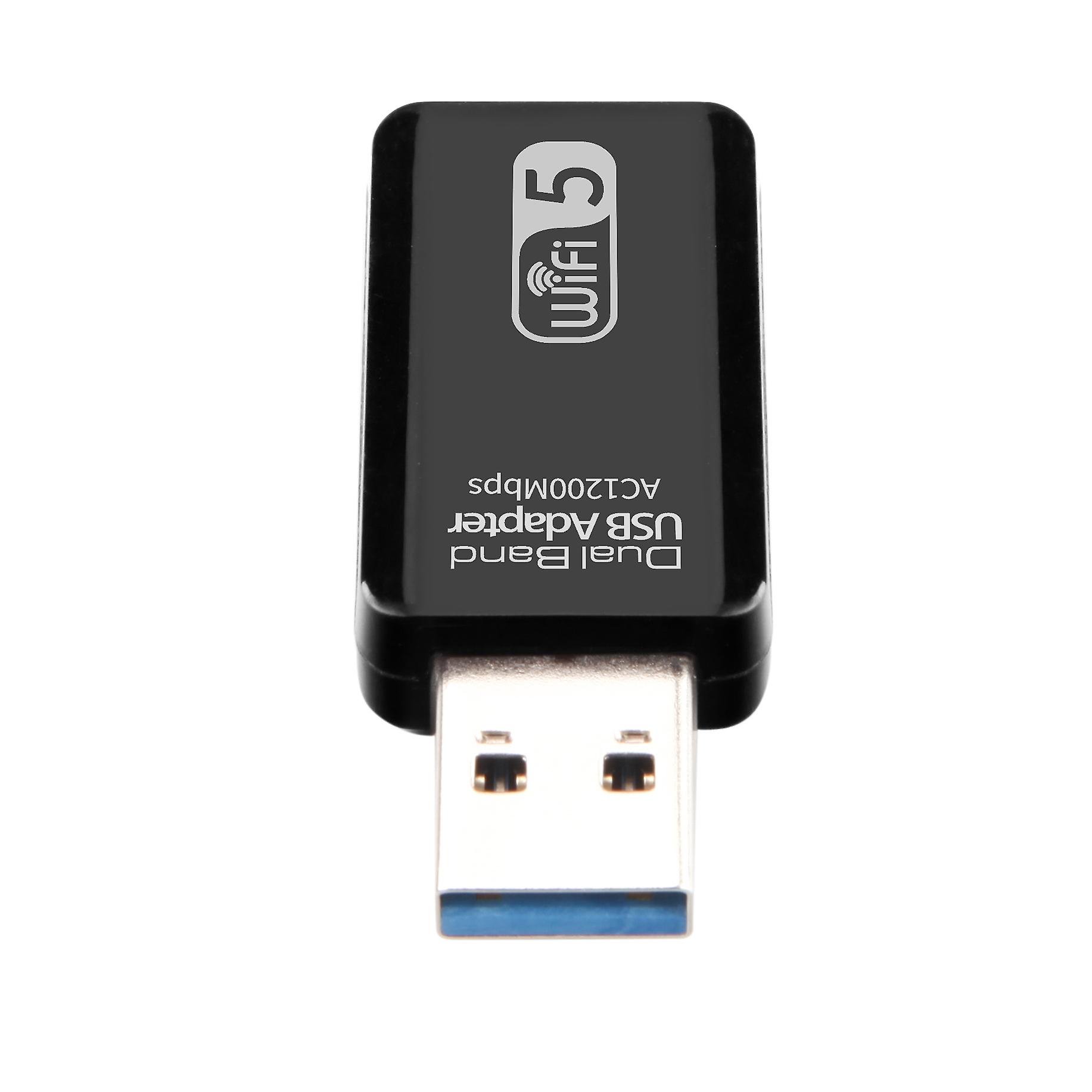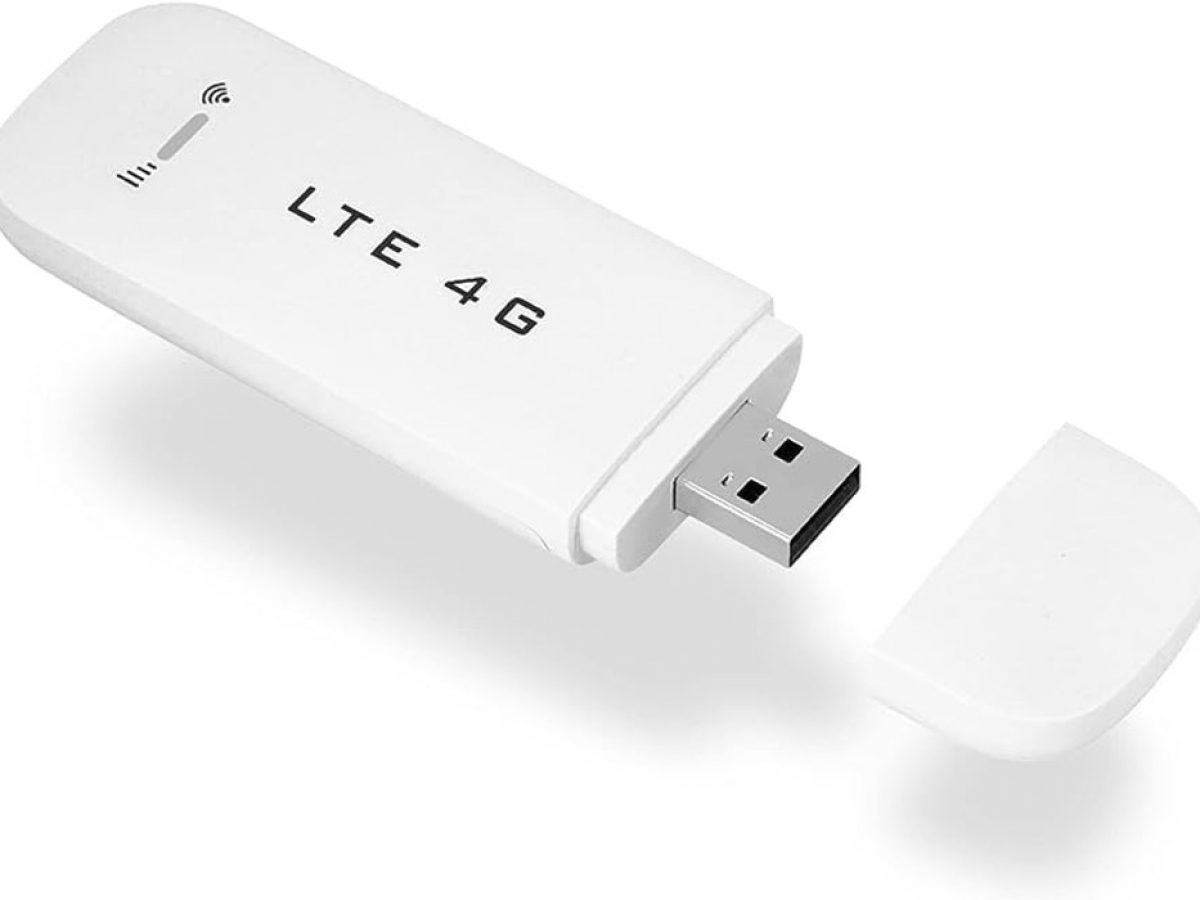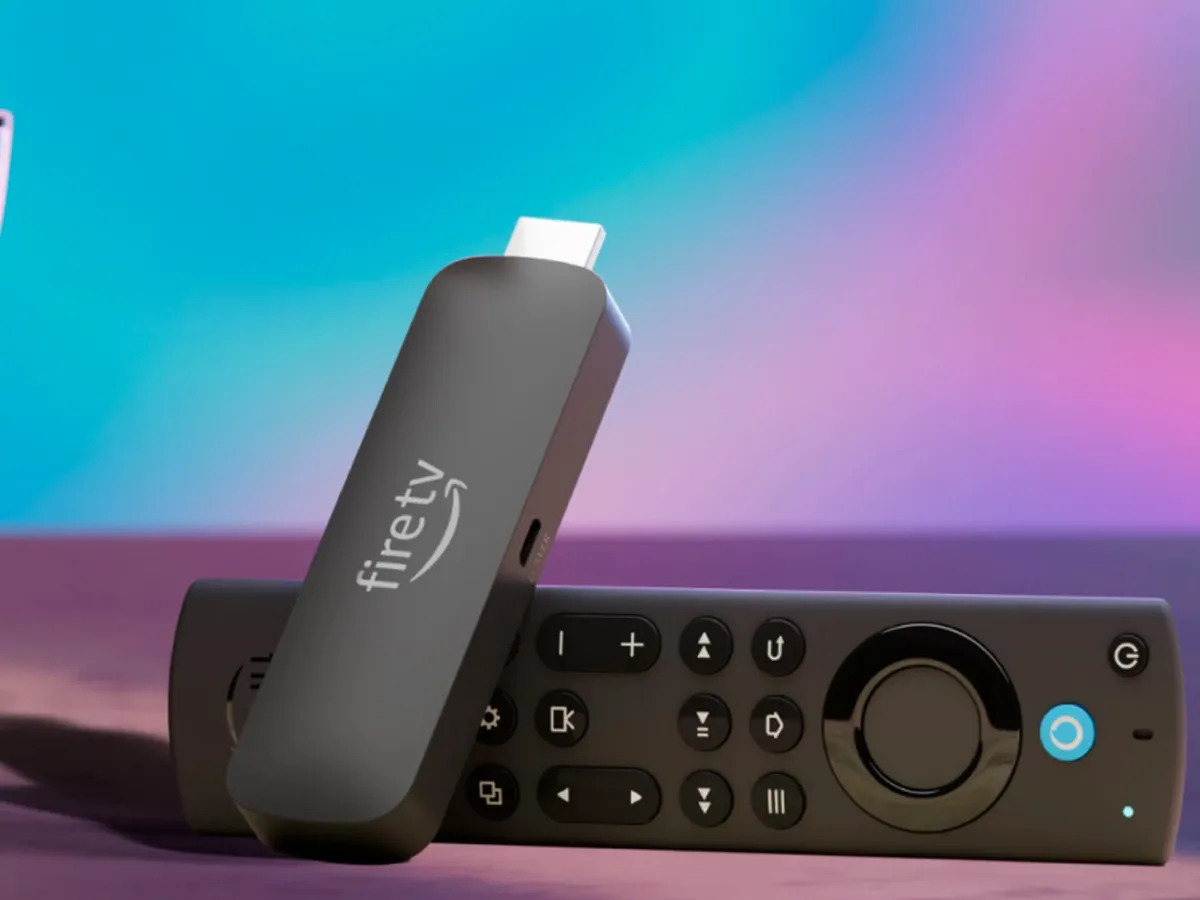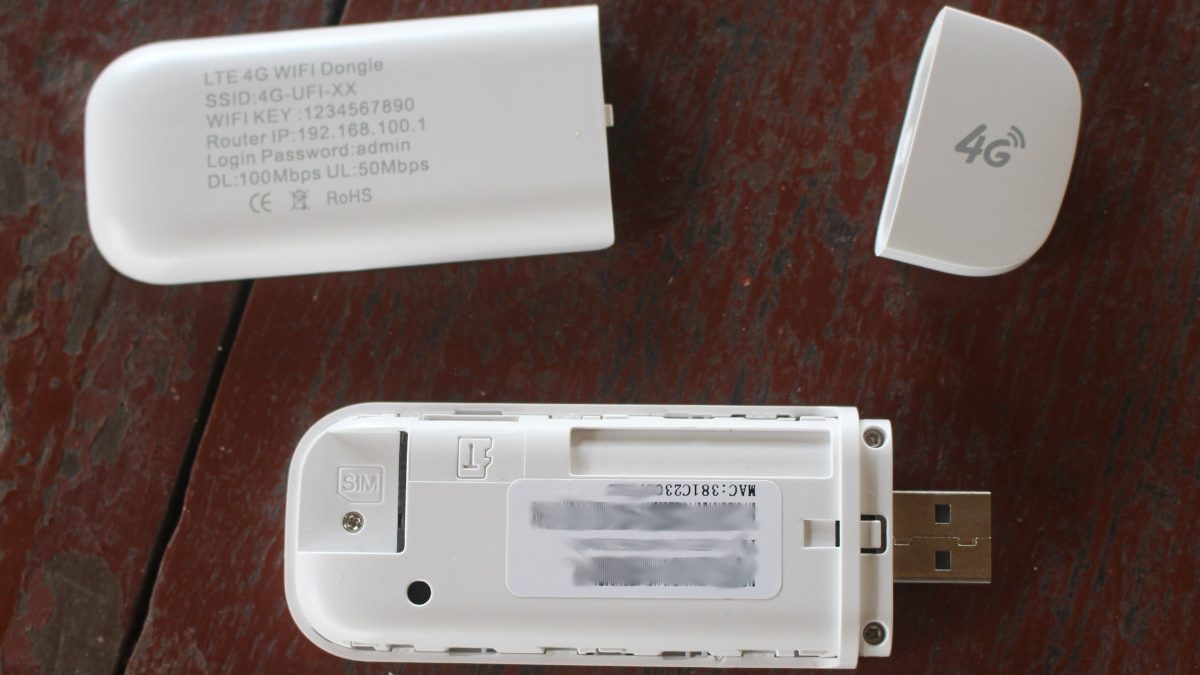Introduction
Welcome to the world of wireless connectivity! As technology continues to evolve, the need for a stable and reliable internet connection has become a necessity for many individuals and businesses. While most devices nowadays come with built-in Wi-Fi capabilities, there are situations where you may need to enhance or extend your wireless range. This is where a Wi-Fi dongle comes in handy.
A Wi-Fi dongle, also known as a wireless adapter or USB Wi-Fi adapter, is a small device that allows you to connect your computer, laptop, or other devices to a Wi-Fi network. It provides wireless internet access by receiving and transmitting signals between your device and the Wi-Fi router.
Whether you’re working remotely, gaming online, or simply browsing the web, having a reliable and fast internet connection is crucial. A Wi-Fi dongle can significantly improve your wireless experience, especially in areas with weak or limited Wi-Fi coverage.
In this article, we will explore the world of Wi-Fi dongles, how they work, the different types available, their benefits, and factors to consider when choosing one. We will also provide guidance on setting up a Wi-Fi dongle and troubleshoot common issues you may encounter. By the end of this article, you’ll have a better understanding of Wi-Fi dongles and how they can enhance your internet connectivity.
So, let’s dive in and discover the wonders of Wi-Fi dongles!
Overview of WiFi Dongle
A Wi-Fi dongle is a compact and portable device that allows you to connect your device to a wireless network. It serves as an intermediary between your device and the Wi-Fi router, providing a seamless wireless connection. The dongle connects to your device via a USB port or other means, depending on the device’s compatibility.
One of the key features of a Wi-Fi dongle is its ability to provide a wireless connection without the need for built-in Wi-Fi capabilities. This makes it an ideal solution for devices such as desktop computers, laptops, gaming consoles, and even smart TVs that don’t have Wi-Fi functionality out of the box.
Wi-Fi dongles come in various shapes and sizes, ranging from small USB adapters to larger hardware devices with external antennas. They are usually compatible with different Wi-Fi standards, including 802.11n, 802.11ac, and the latest 802.11ax (Wi-Fi 6) standards. This ensures that you can connect to a wide range of Wi-Fi networks and benefit from faster speeds and better performance.
One of the primary advantages of using a Wi-Fi dongle is its portability. Unlike traditional wired connections, which can be limiting in terms of range and flexibility, a Wi-Fi dongle allows you to connect to Wi-Fi networks wherever you go. This makes it an excellent choice for individuals who travel frequently or work remotely, providing them with the freedom to access the internet from virtually anywhere.
Furthermore, a Wi-Fi dongle is relatively easy to install and set up. Most dongles come with straightforward installation processes, and many include installation CDs or provide the necessary drivers online. Once connected, the dongle will detect nearby Wi-Fi networks, allowing you to select and connect to the desired network with just a few clicks.
Overall, a Wi-Fi dongle is a versatile device that brings the convenience of wireless connectivity to devices without built-in Wi-Fi capabilities. It enables you to stay connected, access online content, and enjoy a seamless internet experience. Whether you’re a student, a professional, or a casual internet user, a Wi-Fi dongle can be a valuable addition to your tech arsenal.
How Does a WiFi Dongle Work?
Have you ever wondered how a small device like a Wi-Fi dongle can provide wireless internet access to your device? Let’s take a closer look at how these handy devices work.
At its core, a Wi-Fi dongle acts as a wireless adapter, allowing your device to communicate with a Wi-Fi network. It consists of a built-in radio transmitter and receiver, similar to those found in Wi-Fi routers. When you connect a Wi-Fi dongle to your device, it establishes a connection to the dongle via a USB port or other means, depending on the dongle’s design.
Once connected, the dongle scans the environment for available Wi-Fi networks and displays them on your device. You can then select the desired network and enter the password, if required. The dongle sends this information to the Wi-Fi router, which authenticates and connects your device to the network.
The Wi-Fi dongle uses the same underlying principles as a Wi-Fi router to transmit and receive data. It employs the IEEE 802.11 wireless standards, which define the protocols for wireless communication. These standards ensure compatibility between devices and enable seamless data transmission.
When you send a request for data, such as loading a webpage or streaming a video, the dongle transmits the request to the Wi-Fi router. The router then retrieves the requested data and sends it back to the dongle, which in turn passes the data to your device. This two-way communication enables you to access the internet wirelessly.
Furthermore, the Wi-Fi dongle operates on specific frequency bands, such as 2.4 GHz or 5 GHz. The choice of frequency band depends on the capabilities of the dongle and the Wi-Fi router. The 2.4 GHz band offers better range but can be more crowded due to other devices using the same frequency. On the other hand, the 5 GHz band provides faster speeds but has a shorter range.
Overall, a Wi-Fi dongle acts as a bridge between your device and a Wi-Fi network. It facilitates wireless communication, allowing you to access the internet and enjoy online content without the need for wired connections or built-in Wi-Fi capabilities on your device.
Now that you understand how a Wi-Fi dongle works, let’s explore the different types of dongles available in the next section.
Types of WiFi Dongles
When it comes to Wi-Fi dongles, there are several types available on the market, each with its own features and capabilities. Let’s take a look at the different types of Wi-Fi dongles:
- USB Wi-Fi Dongle: This is the most common type of Wi-Fi dongle. It connects to your device via a USB port and provides wireless internet access. USB Wi-Fi dongles are compact and portable, making them easy to use with laptops, desktop computers, and other devices that have USB ports.
- PCIe Wi-Fi Card: A PCIe Wi-Fi card is an internal Wi-Fi dongle that is installed directly onto your computer’s motherboard. This type of dongle offers faster speeds and better performance compared to USB dongles. It is ideal for desktop computers, as it provides a more permanent and stable wireless connection.
- Micro Wi-Fi Dongle: If you’re looking for a Wi-Fi dongle that is ultra-compact and discreet, a micro dongle might be the right choice. These dongles are extremely small in size and often have a low profile when plugged into a USB port.
- External Antenna Wi-Fi Dongle: Some Wi-Fi dongles come with an external antenna, which can enhance the signal strength and range. This type of dongle is useful in areas where the Wi-Fi signal is weak or when you need to connect to a network at a greater distance.
- Dual-Band Wi-Fi Dongle: Dual-band Wi-Fi dongles support both 2.4 GHz and 5 GHz frequency bands. This allows you to connect to networks on either band, depending on your needs. Dual-band dongles provide more flexibility and can help reduce interference from other devices.
- Wi-Fi Dongles for Specific Devices: Some manufacturers offer Wi-Fi dongles designed specifically for certain devices such as gaming consoles or smart TVs. These dongles are tailored to work seamlessly with the respective devices and provide a reliable wireless connection.
When choosing a Wi-Fi dongle, consider your specific needs and the compatibility with your devices. USB dongles are typically versatile and can be used with various devices, while internal PCIe cards offer higher performance for desktop computers. Additionally, consider the speed and range capabilities of the dongle, as well as other features that may be important to you.
Now that you are familiar with the types of Wi-Fi dongles available, let’s move on to explore the benefits of using a Wi-Fi dongle.
Benefits of Using a WiFi Dongle
Using a Wi-Fi dongle offers a wide range of benefits that can enhance your internet connectivity experience. Let’s explore some of the key advantages of using a Wi-Fi dongle:
- Wireless Connectivity: The most obvious benefit of using a Wi-Fi dongle is the ability to connect to the internet wirelessly. This eliminates the need for wired connections and gives you the freedom to move around without being tied to a specific location.
- Extended Range: Wi-Fi dongles with external antennas or advanced signal amplifiers can provide an extended range compared to built-in Wi-Fi capabilities. This is especially useful in larger spaces or areas with weak Wi-Fi coverage, allowing you to maintain a stable connection even at a distance from the router.
- Improved Speed and Performance: Wi-Fi dongles that support the latest Wi-Fi standards, such as 802.11ac or 802.11ax (Wi-Fi 6), can offer faster speeds and improved performance compared to older devices. This results in quicker downloads, seamless streaming, and smoother online gaming experiences.
- Easy Setup and Portability: Wi-Fi dongles typically have a simple installation process that involves plugging the dongle into a USB port or other compatible port on your device. They are also compact and portable, making them easy to carry and use with different devices, whether you’re at home, in the office, or on the go.
- Flexibility and Compatibility: Wi-Fi dongles are designed to be compatible with a wide range of devices, including laptops, desktop computers, gaming consoles, and smart TVs. This means that you can use the same dongle with multiple devices, providing flexibility and convenience.
- Cost-Effective Solution: In situations where you have devices without built-in Wi-Fi capabilities, investing in Wi-Fi dongles is a cost-effective solution compared to replacing or upgrading those devices. It allows you to add wireless connectivity at a fraction of the cost.
- Secure Connection: Wi-Fi dongles utilize the same security protocols as Wi-Fi routers, ensuring that your connection is secure and protected from unauthorized access. This is important, especially when you’re connecting to public or shared Wi-Fi networks.
Whether you’re a student, professional, gamer, or casual internet user, using a Wi-Fi dongle can greatly enhance your internet connectivity experience. It provides the convenience of wireless connectivity, improved range and speed, easy setup, and compatibility with a wide range of devices.
Now that we have explored the many benefits of using a Wi-Fi dongle, let’s move on to the next section, where we’ll discuss the factors you should consider when choosing a Wi-Fi dongle.
Factors to Consider When Choosing a WiFi Dongle
When selecting a Wi-Fi dongle, there are several essential factors to consider to ensure you choose the right one for your needs. Let’s take a closer look at these factors:
- Compatibility: Ensure that the Wi-Fi dongle is compatible with your device’s operating system. Whether you’re using Windows, macOS, Linux, or other platforms, make sure the dongle has drivers available for your specific OS.
- Wi-Fi Standards: Look for a Wi-Fi dongle that supports the latest Wi-Fi standards, such as 802.11ac or 802.11ax (Wi-Fi 6), as they offer faster speeds and better performance compared to older standards.
- Speed and Performance: Consider the maximum data transfer speed supported by the dongle. Higher speeds allow for quicker downloads, smoother streaming, and better online gaming experiences.
- Range: If you require a wider wireless coverage area, consider a Wi-Fi dongle with an external antenna or signal amplification capabilities to ensure a stable connection even at a distance from the Wi-Fi router.
- Dual-Band Support: Select a dongle that supports both 2.4 GHz and 5 GHz frequency bands. This allows you to connect to networks on either band, providing more flexibility and reducing potential interference.
- Security: Look for a Wi-Fi dongle that offers advanced security protocols, such as WPA2 or WPA3, to ensure a secure connection when accessing public or shared Wi-Fi networks.
- USB Port Compatibility: If you opt for a USB Wi-Fi dongle, ensure that it is compatible with the USB ports on your device. Some dongles may require USB 3.0 ports for optimal performance.
- Reviews and Ratings: Research and read reviews from other users to get an idea of the performance and reliability of the Wi-Fi dongle you are considering. Look for positive feedback and high ratings from reputable sources.
- Price: Consider your budget when choosing a Wi-Fi dongle. While more expensive models may offer advanced features, there are often budget-friendly options that can still meet your wireless connectivity needs.
By taking these factors into account, you can select a Wi-Fi dongle that best suits your requirements. It’s important to balance your needs with the features offered by the dongle, ensuring that you get the most out of your wireless connectivity experience.
Now that you have a better understanding of the factors to consider when choosing a Wi-Fi dongle, let’s move on to the next section, where we’ll discuss how to set up a Wi-Fi dongle.
Setting Up a WiFi Dongle
Setting up a WiFi dongle is a relatively straightforward process, typically requiring a few simple steps. Here’s a general guide on how to set up a WiFi dongle:
- Check Compatibility: Ensure that the WiFi dongle you purchased is compatible with your device’s operating system. Check the manufacturer’s specifications and ensure that the necessary drivers are available for your specific operating system.
- Driver Installation: If the WiFi dongle requires drivers, insert the installation CD (if provided) into your device or download the drivers from the manufacturer’s website. Follow the instructions provided to install the drivers on your device.
- Connect the WiFi Dongle: Plug the WiFi dongle into an available USB port on your device. If you are using an internal PCIe WiFi card, you will need to open your computer’s case and insert the card into a compatible slot on the motherboard.
- Operating System Detection: Once connected, your operating system should detect the WiFi dongle and prompt you to set up the wireless connection. Follow any additional on-screen instructions, if any.
- Network Selection: Your device should display a list of available WiFi networks detected by the WiFi dongle. Select the desired network from the list and enter the network password if required. Click connect to establish the connection.
- Configure Network Settings (if necessary): In some cases, you may need to configure specific network settings, such as IP address or proxy settings. This typically applies to advanced network environments or specific network requirements. Consult the device’s user manual or contact the manufacturer for guidance on network configuration.
- Connected: Once the WiFi dongle successfully connects to the network, you should have access to the internet wirelessly. Test the connection by opening a web browser and loading a webpage to ensure that you have a stable and functional internet connection.
It’s important to note that the setup process might vary slightly depending on the WiFi dongle and your operating system. Always refer to the manufacturer’s instructions or the device’s user manual for specific setup instructions.
Congratulations! You have successfully set up your WiFi dongle and can now enjoy wireless internet connectivity on your device. In the next section, we’ll discuss common issues you may encounter with WiFi dongles and how to troubleshoot them.
Troubleshooting Common Issues with WiFi Dongles
While WiFi dongles are generally reliable, you may occasionally encounter some issues. Here are some common problems you might face with WiFi dongles and how to troubleshoot them:
- Connection Drops or Instability: If you experience frequent connection drops or unstable WiFi, try moving closer to the router to ensure a stronger signal. Additionally, check for any physical obstructions or interference from other electronic devices that may be affecting the WiFi signal. Updating the dongle’s drivers or firmware may also help resolve connectivity issues.
- Slow Internet Speed: If you notice slower than expected internet speeds, first ensure that you are within a reasonable range of the WiFi router. Check for any background applications or downloads that may be consuming bandwidth. Additionally, you can try changing the WiFi channel on your router to reduce interference from nearby networks.
- No WiFi Networks Detected: If your WiFi dongle is not detecting any WiFi networks, ensure that it is properly connected to your device. Try restarting your device or unplugging and reinserting the dongle. If the issue persists, check the dongle’s compatibility and drivers to ensure they are up to date. It’s also possible that the dongle may be faulty and may need to be replaced.
- Dongle Not Recognized: If your computer or device does not recognize the WiFi dongle, try plugging it into a different USB port. Ensure that the drivers are installed correctly and up to date. If the issue persists, try the dongle on another device to determine if there is a compatibility problem.
- Authentication or Password Issues: If you are unable to connect to a WiFi network due to authentication or password issues, double-check the password for accuracy. Ensure that you have selected the correct security protocol (WPA, WPA2, etc.) corresponding to the WiFi network. If the issue persists, try resetting the WiFi router and entering the password again.
- Interference from Other Devices: If you experience intermittent connectivity issues or reduced WiFi performance, it may be due to interference from other devices. Move away from sources of interference such as cordless phones, microwave ovens, or baby monitors. Consider using a WiFi dongle with dual-band support to connect to the less crowded 5 GHz frequency band.
If none of the troubleshooting steps resolve the issue, it may be necessary to consult the device’s user manual or contact the manufacturer’s support for further assistance. They can provide specific guidance or help with more advanced troubleshooting techniques.
By understanding common issues and troubleshooting steps, you can overcome challenges with WiFi dongles and enjoy a stable and reliable wireless connection.
Now that we have covered troubleshooting common issues, let’s move on to the concluding section of this article.
Conclusion
WiFi dongles are invaluable devices that bring wireless connectivity to a wide range of devices, providing convenience, flexibility, and improved internet access. In this article, we’ve explored the world of WiFi dongles, delving into their overview, functionality, types, benefits, factors to consider when choosing one, setup process, and common troubleshooting techniques.
WiFi dongles, whether in the form of USB adapters or internal PCIe cards, offer the ability to connect to WiFi networks without built-in WiFi capabilities. They provide extended range, improved speed and performance, and can be easily set up on various devices. By considering factors such as compatibility, WiFi standards, speed, range, and security, you can select the right WiFi dongle to suit your specific needs.
Setting up a WiFi dongle typically involves installing drivers, connecting the dongle to the device, and configuring network settings. Troubleshooting common issues such as connection drops, slow internet speed, or connection stability can be resolved by adjusting distance from the router, managing interference, updating drivers, or checking authentication and password settings.
With a WiFi dongle, you can enjoy the convenience of wireless connectivity, providing seamless internet access at home, in the office, or on the go. Whether you’re a student, professional, gamer, or casual internet user, a WiFi dongle can greatly enhance your internet experience and keep you connected.
Now that you have a comprehensive understanding of WiFi dongles, their benefits, and how to overcome common issues, you can confidently choose and set up the right WiFi dongle for your needs. Stay connected, explore the wonders of the internet, and enjoy the freedom of wireless connectivity with a WiFi dongle!







